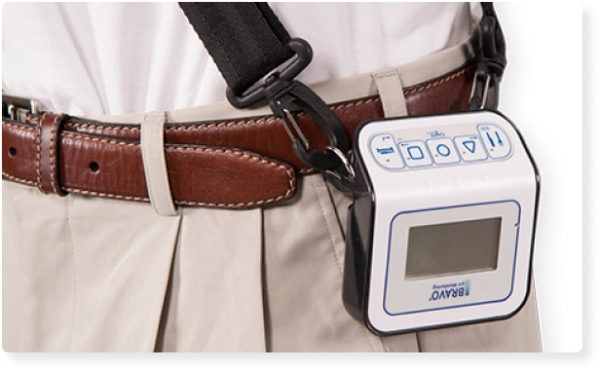PH Study Impedance and Manometry - Bravo Monitor
Explore pH study impedance, a diagnostic test to evaluate acid reflux and related conditions. The Bravo pH test is one of the effective diagnosis tests that measure pH levels. In addition, the amount of acid that flows into the esophagus from the stomach during 24 hours.
Moreover, doctors commonly use the procedure to help confirm the diagnosis of acid reflux. Furthermore, identify the cause of various symptoms. Such as heartburn, chest pain, chronic cough, asthma, and other throat symptoms.
Do you suffer from acid reflux? Are you looking for a non-invasive method to monitor your condition? Bravo pH Study may be right for you.
How do Doctors Perform the Bravo pH Test?
The physician will place a capsule on the wall of your esophagus. The capsule sends information to a receiver worn outside your body. Moreover, there are specific buttons on the receiver that you can press to record the symptoms that you are experiencing.
How much does Bravo pH Test Cost?
The pH study impedance, bravo monitor cost varies depending on your treatment. Contact us for more information.

How Long does it Take to See Results from the test?
Once you have finished the Bravo pH test, return the receiver back to the physician. The doctor will then analyze the information. Subsequently, will contact you for action regarding your condition.

What Risks Associated with the Bravo pH Test?
Doctors generally consider the Bravo pH Test to be a safe procedure. There is a small chance that the pH capsule could become dislodged, but it is not likely.
Is a Bravo pH Test Painful?
No, this is a virtually painless procedure so there is no need to worry.
How Long do I Need to Wear the Bravo Monitor?
The Bravo pH test period typically lasts 24-48 hours. Once you complete the test, the device should shut down automatically.
Do I have to keep the Bravo Monitor on at all times?
Thankfully monitor can transmit information from 3 feet away. This means that you can engage in showing and sleeping without interrupting the test.
How long does the Capsule stay in my Body?
Your system will usually eliminate the capsule within 48 hours.

pH Study Impedance - Bravo Wireless Esophageal pH Monitoring
Bravo wireless esophageal pH monitoring also measures and records the pH in your esophagus to determine if you have GERD. A doctor temporarily attaches a small capsule to the wall of your esophagus during an upper endoscopy. The capsule measures pH levels in the esophagus and transmits information to a receiver. The receiver is about the size of a pager, which you wear on your belt or waistband.
You will follow your usual daily routine during monitoring, which usually lasts 48 hours. The receiver has several buttons on it that you will press to record symptoms of GERD such as heartburn. The nurse will tell you what symptoms to record. Then, you will need to maintain a diary to record certain events. For instance when you start and stop eating and drinking, when you lie down, and when you get back up.
To prepare for the test talk to your doctor about medicines you are taking. They will tell you whether you can eat or drink before the procedure. After about seven to ten days the capsule will fall off the esophageal lining and pass through your digestive tract.
Esophageal pH Study Impedance Monitoring
The most accurate procedure to detect acid reflux is esophageal pH and impedance monitoring. Esophageal pH and impedance monitoring measure the amount of acid in your esophagus. While you do normal things, such as eating and sleeping. We perform this procedure in the office as part of an upper GI endoscopy. Sometimes, you can stay awake during the procedure.
A thin tube will pass through your nose or mouth into your stomach. Then pulled back into your esophagus and taped to your cheek. The end of the tube in your esophagus measures when and how much acid comes up your esophagus. The other end of the tube attaches to a monitor outside your body that records the measurements. Afterward, you will wear a monitor for the next 24 -48 hours. Eventually, you will return to the office to have the tube removed.
This procedure is most useful to your doctor. Especially, f you keep a diary of when, what, and how much food you eat. Particularly, what your GERD symptoms are after you eat. The doctor can see how your symptoms, certain foods, and certain times of day relate to one another. The procedure can also help show whether acid reflux triggers any respiratory symptoms.
pH Study Impedance - Esophageal Manometry
Esophageal manometry measures muscle contractions in your esophagus. The doctor may order this procedure if you’re thinking about anti-reflux surgery. The doctor can perform this procedure during an office visit. Then he will spray a liquid anesthetic. Precisely on the back of your throat or ask you to gargle a liquid anesthetic.
The doctor passes a soft, thin tube through your nose and into your stomach. You swallow as the doctor pulls the tube slowly back into your esophagus. A computer measures and records the pressure of muscle contractions in different parts of your esophagus.
The procedure can show if your symptoms are due to a weak sphincter muscle. A doctor can also use the procedure to diagnose other esophagus problems that might have symptoms similar to heartburn. A healthcare professional will give you instructions about eating, drinking, and taking your medicines after the procedure.
Take the GERD Quiz. Answer a few questions about your symptoms and lifestyle to get the personalized GERD stage severity assessment.






